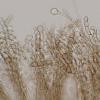
21-12-2025 09:32
Hello.A tiny ascomycete found embedded in wood in

21-12-2025 21:32
Pol DebaenstHello, Garden, Burgweg 19, Veurne, BelgiumOn 10/1

22-12-2025 23:38
Patrice TANCHAUDBonsoir, récolte sur un mur en pierre, apothéci

22-12-2025 00:47
Patrice TANCHAUDBonsoir, récolte à proximité du milieu dunaire

21-12-2025 21:40
Isabelle CharissouBonjour, j'aimerais connaitre les références de

20-12-2025 23:08
Patrice TANCHAUDBonsoir, récolte sur sol sablonneux dans l'arri�
Thanks again
Mal
Hi Malcolm:
is very difficult to give an opinion with only those data. Macroscopic characteristics? Asci reaction with IKI?
Dirk, your photography is a different species, perhaps G. cookeanum.
Regards.
Sabino.
Yes Dirk, but in the typical form, the parahyses of G. cookeanum can be highly variable. G. barlae ss. orig. = G. cookeanum, see Benkert.
Regards.
Sabino.
Mal
Yes Malcolm, clearly. The interpretation of Priou (and most authors) is another species.
Sabino.
Thanks Sabino
We will have to wait until all these species are included in a new key.
Mal

my key 1992 is of course obsolete after the good job by Arauzo & Iglesias. In Errotari 2014.
When I look my plate, puff! I learned to draw after... then Zorro is arrived, pardon when Zotto is arrived
At this time, , the authors for exemple Nannfelt 1942, Maas-Geesteranus 1956 and Benkert 1976 give barlae with hooked- crozier-like paraphyses. But after 1996 Benkert synonymises it with cookeanum, we need to give a new name for the specimen with such paraphyses.
In his key Sabino brings new features to separate Geoglossum species, IIK reaction and the extern cells shape of sterile part, nethertheless , with these characters, we are often "assis entre deux chaises " French lession !
JPP
I see a lot of Geoglossum cookeanum with the paraphyses consistantly multi-septate, slight constriction at the septation, and often with capitate heads. The third cell from the apex is often elongated but I have never seen it distorted as depicted in some images of the perceived G. barlae.
Regards, Chris
Mal

JPP
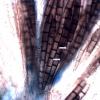
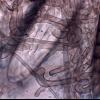
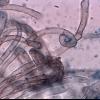
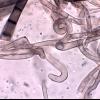

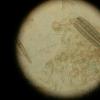
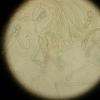
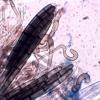
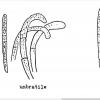
 Geoglossum barlae Benkert
Geoglossum barlae Benkert